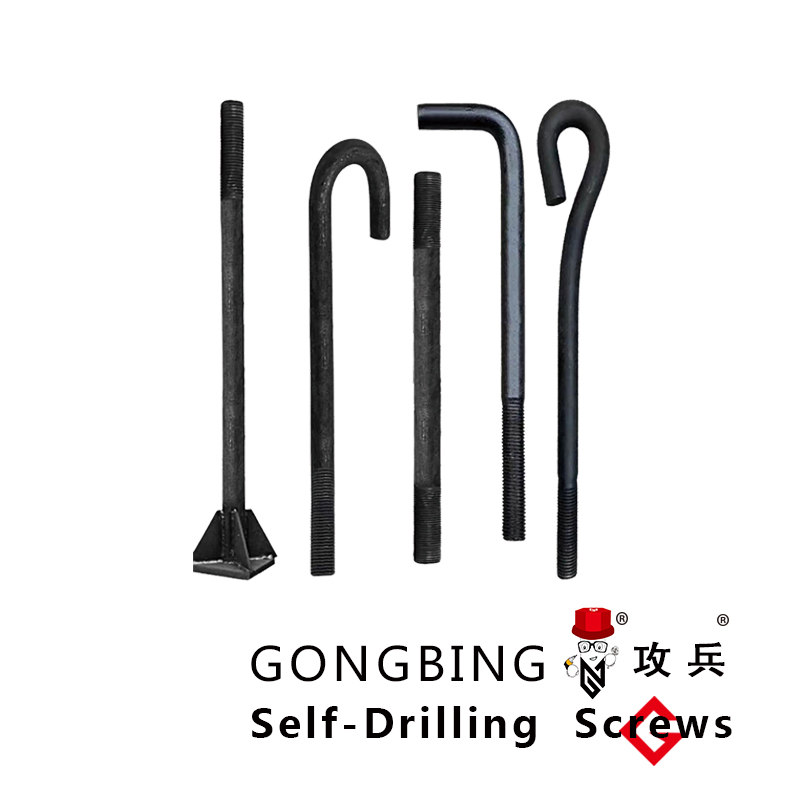Exploring the Innovative Design and Functionality of Bolt Structures in Modern Engineering
Understanding Bolt Structure An Overview
The bolt is an essential mechanical fastener used in a wide variety of applications, from construction and manufacturing to automotive assembly. Its design and structure are pivotal in ensuring the reliability and effectiveness of the fastening process. In this article, we will explore the structure of a bolt, its components, and the principles behind its functionality, with a focus on the intricacies that make bolts such a crucial component in various industries.
Components of a Bolt
A typical bolt consists of several key parts the head, shank, threads, and the unthreaded portion (also known as the grip or shank length).
1. Head The head of the bolt is the larger, often hexagonal, top part. It is designed for torque application and is crucial for the fastening process. The shape of the head allows it to be easily gripped by tools such as wrenches or sockets. There are various types of bolt heads, including hex, square, and round, each suited for different applications.
2. Shank This is the long cylindrical portion of the bolt. The shank connects the head to the threaded section and is usually the same diameter throughout, ensuring structural integrity and strength.
3. Threads The threaded part of the bolt is arguably its most critical component. Threads are helical ridges that encircle the bolt's shank, providing the necessary grip when the bolt is tightened. The spacing and depth of the threads can vary, influencing the load-bearing capacity and the ease of installation. Common thread types include coarse and fine threads, with coarse threads generally providing better grip in softer materials.
4. Unthreaded Portion This area allows the bolt to pass through materials without engaging the threads until it reaches the intended fastening surface. This feature is particularly useful in applications where alignment is critical.
bolt structure

Functionality of Bolts
The functionality of a bolt hinges on the principles of tension and shear. When a bolt is tightened, it is subjected to tensile forces that generate a clamping force, securing the joined components together. The effectiveness of this clamping force is directly related to the bolt's material properties, the quality of the threads, and the application of the correct torque during installation.
Bolts can also experience shear forces, particularly in structural applications where loads are applied perpendicular to the axis of the bolt. A well-designed bolt structure can withstand significant tensile and shear loads, making it suitable for a wide range of applications, from securing machinery components to holding together structural beams in buildings and bridges.
Materials and Coatings
Bolts are made from various materials, including steel, stainless steel, brass, and plastics, depending on the environmental conditions and load requirements. Steel bolts are the most common due to their strength and durability, while stainless steel bolts offer excellent corrosion resistance for use in harsh environments.
Additionally, bolts may be coated with different materials, such as zinc, to enhance their resistance to corrosion and improve their aesthetic appeal. The choice of material and coating can significantly affect the performance and longevity of the bolt in various applications.
Conclusion
In conclusion, the structure of a bolt is a perfect amalgamation of mechanical design and material science, functioning effectively to create secure connections in numerous applications. Understanding the components and the principles behind bolt functionality is crucial for engineers, manufacturers, and technicians alike. The versatility and reliability of bolts underscore their importance in a myriad of fields, reinforcing the notion that sometimes, the simplest components can have the most significant impact.
-
Weatherproof Plastic Expansion Anchors for OutdoorBerriakJun.06,2025
-
Sustainability in the Supply Chain: Eco-Friendly TEK Screws ProductionBerriakJun.06,2025
-
Load-Bearing Capacity of External Insulation FixingsBerriakJun.06,2025
-
Double Head Bolts: Enhancing Efficiency in Industrial MachineryBerriakJun.06,2025
-
Corrosion Resistance in Chipboard Screws: Coatings for Wholesale DurabilityBerriakJun.06,2025
-
Butterfly Toggle Bolts : Enhancing Structural ResilienceBerriakJun.06,2025
